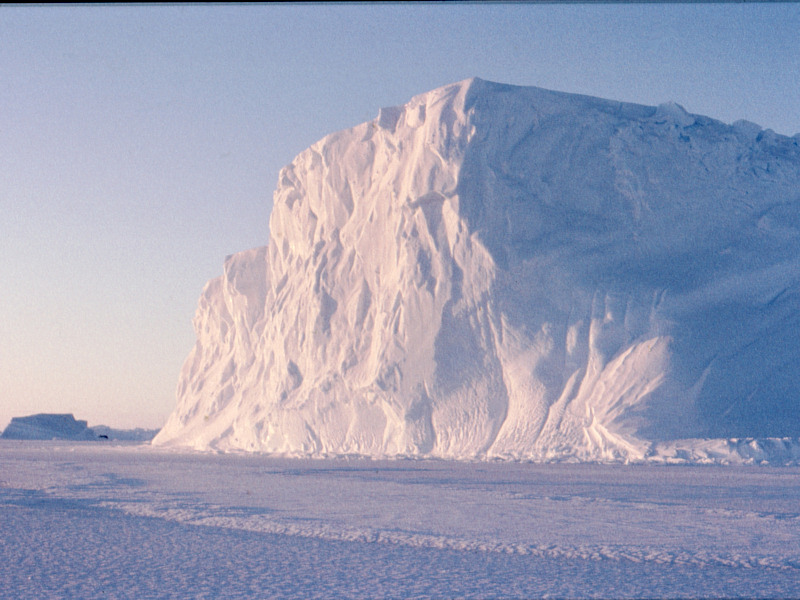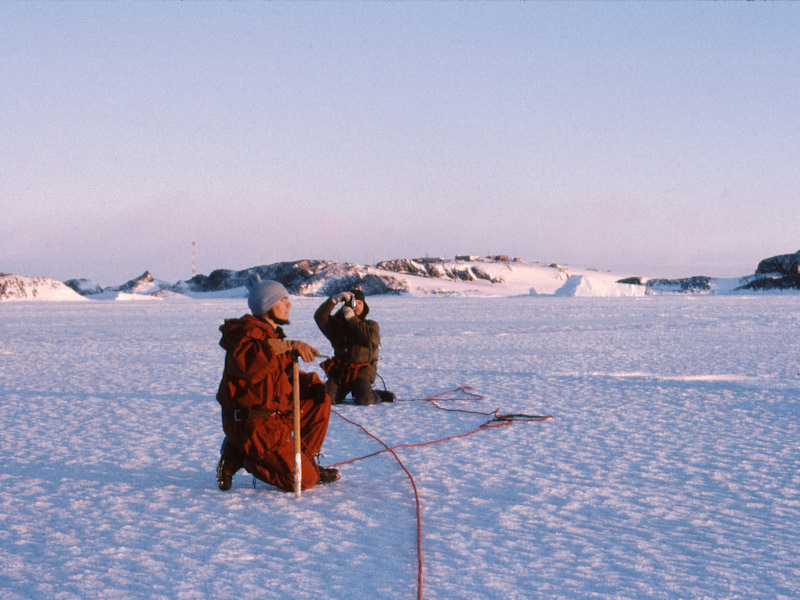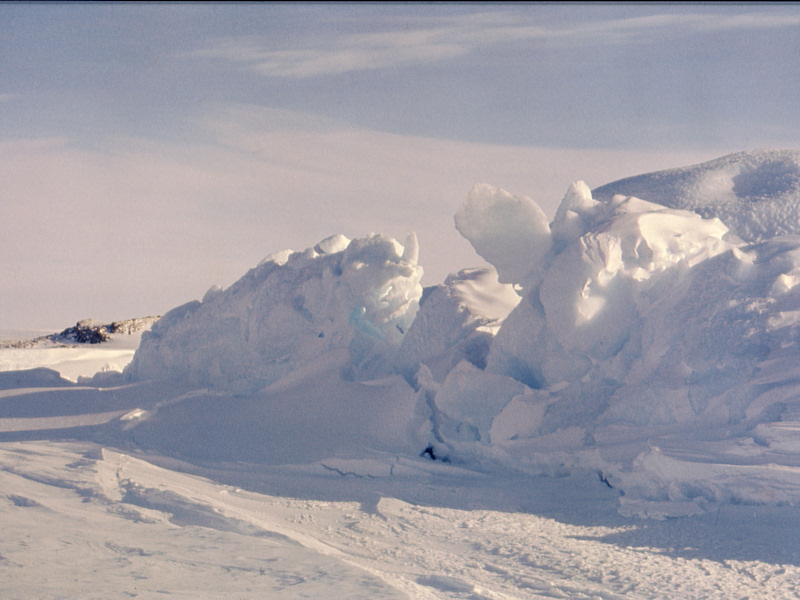
Photo album: "We walked on the sea!"
Fly over a photo with the mouse to enlarge it
Click on a photo to open it in a new window
You can't walk on the sea everywhere, but in the Antarctic during winter it is a normal thing to do, when the ice is thick enough, to widen your horizon. If you take the necessary precautions it is not very dangerous. First of all, the weather must be fine, this is a very important thing. You must be cautious because the weather can change very quickly. Second, you have to advise the responsible person that your are leaving the base and tell him where you intend to go. Third, you must not go away alone and it is better for everyone of the party to be tied together with a rope, in case someone falls in a hole hidden under the snow. Finally, it is preferable to have a radio link with the base, in case a problem happens. During winter, days are short, therefore the walk should take place around noon.
 |
Walking on the sea, you can admire an iceberg from close. |
 |
You can even discover a cave under the iceberg! |
 |
The closer one, Jean-Pierre (Racea), the second one, André (Magne), and in the back Dumont d'Urville base on Pétrels island. |
 |
From time to time André calls the base to say the walk is proceeding without problems. |
 |
Me, on the left, and André who hanged his hat up the radio antenna. |
 |
In this place, two plates, pushed by tempests, have collided and their broken edges have piled up. |
 |
And this is the owner of the hole! A Weddell seal. Let us walk nearer to see it. |
 |
"Let me sleep at peace, who permitted you to disturb me?" |
 |
Let us go a little nearer while it is regaining its breath. |
 |
"This time you are going too far, really! I show you my teeth!". We went away in order not to disturb it any longer. |
.
.
.
.
.
.
.